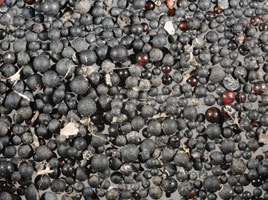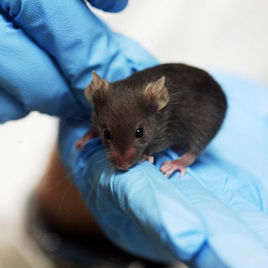Scientists examined rat populations in four cities to assess population-genetic structure, diversity patterns, and dispersal dynamics. Landscape features consistently coincided with genetic breaks, genetic diversity consistently varied within cities—suggesting different population dynamics—and local dispersal dynamics revealed similar trends. Major roads genetically isolate rat populations in Vancouver and Salvador, whereas resource deserts and waterways force genetic […]
SMCC Heads Up – June 5, 2018 
Urban rat races | Fishing shapes habitat | No formula for good gut microbes | SMCC Heads Up | Embargoed and recently published research with a Canadian focus, curated by SMCC for science journalists. Read more>

Baby formula changes gut bacteria and increases overweight risk 
Breastfeeding for longer may change a baby’s gut bacteria to protect them from becoming overweight, according to a Canadian child-health longitudinal study. Researchers found that babies who were fed only formula were three times as likely to be overweight compared with their breastfed peers. The formula-fed babies also had more diverse gut bacteria—this could be […]
Size-restricted fishing shapes age-related codfish habitat 
Researchers used population dynamics modeling to assess the effects of size-specific and age-specific harvesting of Atlantic cod on Canada’s eastern Scotian Shelf. They found that fishing to a depth of 80 metres accounted for 72 per cent of the observed age-related cod-habitat deepening, and increasing fishing depth to 120 metre accounted for all of the […]
Loss of marine-food availability forces Andean condor to fly further for food; other scavengers likely also affected 
As numbers of marine mammals have decreased and human use of coastlines has increased, the Andean condor diet has changed to include one-third to one-half less marine-derived food than a century ago. This influences their movement patterns, with some birds foraging up to 86 km from near-coast nesting sites and over a mountain range to find […]
Ancient reptile revamps lizard family tree 
A fossil previously assigned to a more-inclusive group of ancient reptiles recently has been revealed to have features unique to the group of animals, called squamates, that today includes snakes and lizards. Megachirella wachtleri, about 72 million years older than the next earliest-known true squamate, increases understanding of the origin of squamates and other reptiles, and shows […]

Vitamin D supplements during pregnancy may reduce fetal or newborn mortality 
A review and meta-analysis of 24 randomized clinical trials involving 5,405 pregnant women examined the effects of vitamin D supplementation during pregnancy on several infant outcomes. Babies who had experienced prenatal supplementation had higher calcium levels and weights at birth and throughout the first year. Low-dose supplementation was also associated with reduced risk of fetal […]
SMCC Heads Up – May 28, 2018 
New lizard family tree | Condors flying further to eat | Colour & parasites in a changing world | SMCC Heads Up | Embargoed and recently published research with a Canadian focus, curated by SMCC for science journalists. Read more>

B.C. shellfish-farming regions highly contaminated by microplastics
Researchers sampled sediments from 16 sites within Lambert Channel and Baynes Sound, British Columbia. They found microplastics at all sites, the three main types being microfibers, microbeads, and microfragments. Microbeads comprised up to 25,000/kg sediment. The greatest number of microplastics was found within Baynes Sound, in Henry and Metcalfe bays—regions of intense shellfish aquaculture. Original […]
Plasma lensing in an eclipsing binary star system amplifies pulsar emissions
Pulsars scintillate because their radio signals travel through space along multiple paths that interfere with each other. Researchers have used one of these scintillation-causing regions as an interstellar lens to localize the ‘black widow’ pulsar, B1957+20, near the phase in its 9.2-hour orbit at which its emission is eclipsed by its binary companion’s signal. During the lensing […]
Wildfires and their carbon emissions decreasing over time
Both total area burned by wildfires globally and the associated CO2 emissions have decreased since the 1930s as population density and cropland area have increased. Researchers quantified the effects of increasing cropland area and population density on wildfires between 1850 and 2014, and the associated impact on carbon uptake by land. They found that reduced […]
Widespread ocean anoxia caused past mass extinction
In the first study of its kind, geochemical evidence left behind in marine limestone sediment from Quebec’s Anticosti Island suggests a mass extinction that occurred more than 450 million years ago was caused by a period of global cooling that led to the world’s oceans abruptly losing life-supporting oxygen. The Late Ordovician Mass Extinction was […]
Learning music or another language increases brains’ efficiency
Whether you learn to play a musical instrument or speak another language, you’re training your brain to be more efficient. Researchers found that musicians and people who are bilingual utilized fewer brain resources when completing a working memory task. Individuals with either a musical or bilingual background activated different brain networks and showed less brain […]
From an ass’s mouth: Earliest evidence of use of donkey bit
Teeth from a 4,700-year-old domestic donkey skeleton from Israel reveal unevenly worn enamel that is indicative of bit wear. The findings suggest that bits may have been used to control donkeys in the ancient Near East as early as the third millennium, long before the arrival of the horse. This early evidence emphasizes donkeys’ significance […]
Researcher identifies 15 new species of stealthy cuckoo bees
Cuckoo bees sneakily lay their eggs in the nests of other bee species, after which their newly hatched prodigies kill the host egg or larva, and then feed on the stored pollen. The host, a solitary bee, never knows anything is wrong. Nine new species of these clandestine bees were recently found in collections and […]
DNA reveals ancient story of First Nations group
In the first population-level nuclear DNA analysis of a Native American group from ancient to modern times, the ancient genomes of coastal British Columbia’s and Alaska’s Tsimshian First Nations reveal that, 6,000 years ago, their population was slowly and steadily declining. The findings contradict popular belief that, after ancestors of today’s Indigenous North Americans crossed over the Bering Strait, […]

